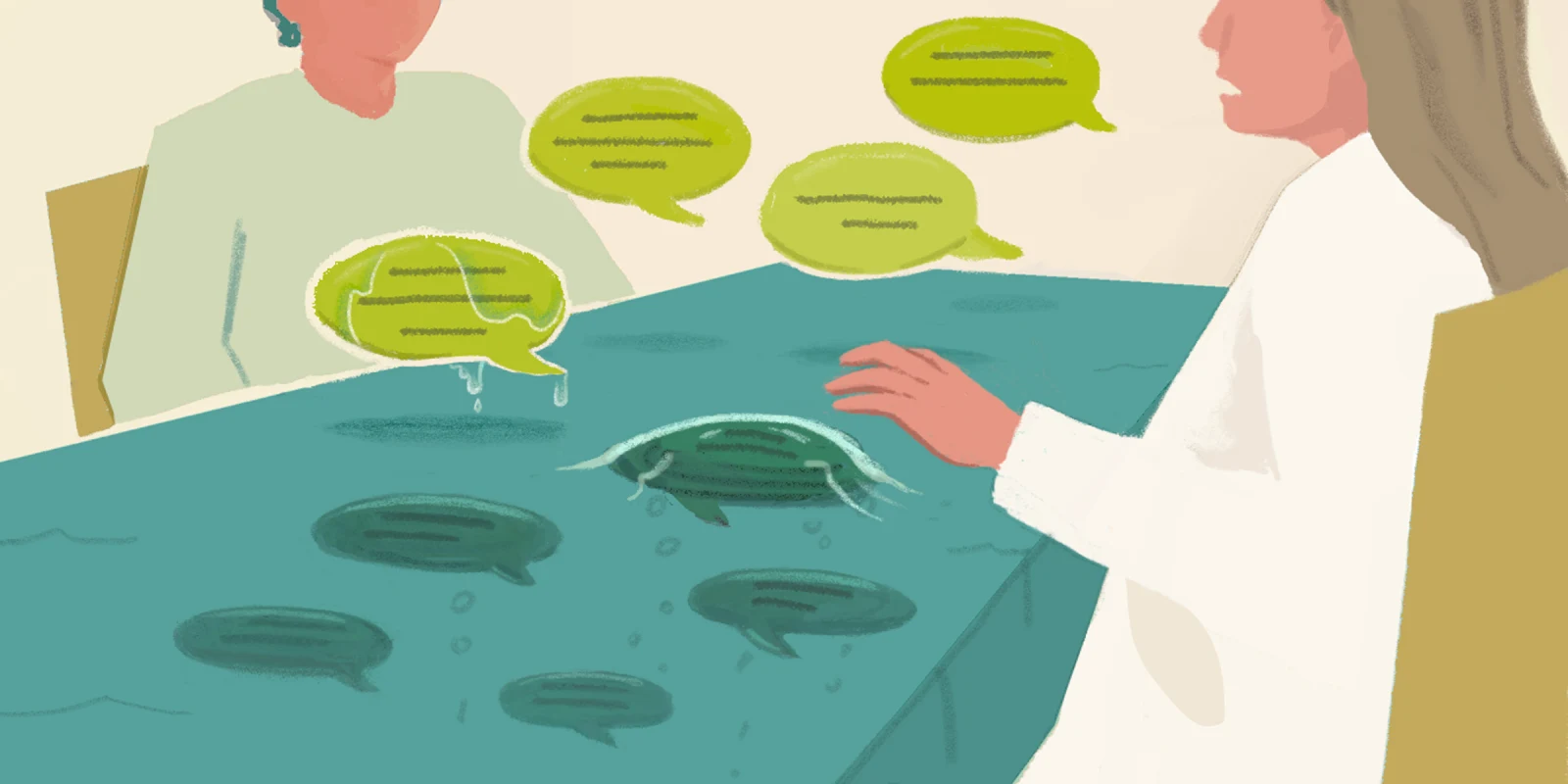I walked into the tiny waiting room – the one reserved for families facing the worst of circumstances. After briefly introducing myself as the physician, I proceeded to tell a room packed full of family members that the baby I have been entrusted in caring for will not survive. This is the first time we have ever met, and I am tasked with delivering the worst news: Their child will soon be brain-dead. Although their child’s heart will continue to beat for now, her brain will die. For their child, their baby, death is imminent — days, hours, minutes. All that modern medicine has to offer is not enough to escape death.
The conversation never becomes easier. After some time absorbing the horrific news, another question often follows: What comes next?
This is one of the harder aspects of my job because I can no longer be completely open and fully honest, a key to establishing a trusting relationship with families. How else will they trust me? My ability to continue the conversation is not permitted by federal and state laws. I’ve received specific training for delivering difficult news, and I have end-of-life discussions with parents multiple times a year. Yet, organ donation is one topic I cannot discuss. Such a sensitive discussion is legally limited to specialists who have had specific training in organ donation conversations. Training designed to improve the rate of consent for donation.
How is organ donation a topic more sensitive than the worst news of their life? With people dying every day while on organ waitlists, there is a moral impetus to improve donation rates. Restrictions exist on the who and how of organ donation discussions, and donor consent continues to be a heavily examined area of transplant research.
Since the 1980s, organ donation and improvement in consent rates have been regulated by state and federal laws in the U.S. Consent for organ donation is a complex process subject to a multitude of factors: personal decision, proxy decision, recognition of eligible donors, physician assumptions about willingness to donate, religion, timing of request, person requesting, how the request is made. To increase donor pools, “Required Request” laws compel hospitals, as part of accreditation, to have policies in place that give all potential donor families the option to donate. This law assumes that most people would donate if given the option – touching on the ethical values of altruism and voluntarism – yet these laws have not had a significant effect on improving donor numbers.
To increase the number of donors, further federal requirements were instituted in the 1990s requiring hospitals to notify Organ Procurement Organizations (OPOs) of imminent patient deaths and established that families should be approached for organ donation in combination with the OPO. The highest donation rates occur in countries that use opt-out strategies, placing the duty on the person to remove themselves from a donation list. The U.S. has maintained an opt-in approach for organ donation that emphasizes the importance of autonomy and focused instead on approaches to consent.
For children, organ donation discussions generally occur near the time of a child’s death, when families are gripped with grief and other unbridled emotions. Even after a decision to donate, organ matching and the subsequent procurement can be a long process. It often begins once a person is declared brain-dead and subsequently approached for donation consent. The “Dead Donor Rule” requires that a person must be legally dead before their vital organs are removed for transplantation.
Following the declaration of death, but prior to donor consent, we continue to support the patient’s bodily functions. This period between death and when the heart ceases to beat becomes a strange interlude. A limbo in which the line between life and death feels blurred. Lying in the hospital bed is a dead body that outwardly functions — albeit due to modern medicine and technology. Yet, there remains an awkwardness when we suddenly withdraw from the intimate space we have known with a family. The trust they have placed in our expertise, authority, and knowledge still exists, yet there is a new distance created by the wait for the OPO discussions to occur.
It is the relationship formed between the donor requestor and the family that improves consent rates, not regulations and laws, so why not take into account the relationship formed between physician and patient? As physicians, we are accountable to both the potential donor and recipient, but the person in front of us is our main priority – even if the recipient also happens to be our patient a few rooms away. Whether I am caring for a potential donor, organ recipient, or both, it can be a difficult area in which to practice medicine if not for the Hippocratic Oath. I must never violate another’s life and decision to give a transplant to another. It is a fine line that will always remain a clear boundary.
As part of my obligation to society, there are potential areas left unexplored in which physicians could contribute and improve organ donation consent rates. Although my primary responsibility is the patient before me, if my presence can potentially increase donor consents, then should I be a part of the OPOs approach for donation? Should I, as a physician, receive training in organ donation conversations? Not only could this improve donation rates, but it could also spill over into other difficult conversations that proceed donation requests. When the question of organ donation is raised by family members prior to brain death or when a grim prognosis is discussed, we could answer the address the questions with even a short and quick explanation before OPOs are able to join. Formalized training would also give us the tools to provide a better explanation of brain death, thereby increasing a families’ likelihood to donate.
Whatever the decision, the time is not easy for any family. At our hospital we observe a moment of silence for the child we have cared for through life and death; a way to honor their short life. For those that undergo organ donation, we have a unique ritual, one that places the family at the center and surrounds them with love to show our support for their noble decision. We line the entire hallway that takes them to the elevator which will in turn take them to the OR for organ donation. Solemn faces stand next to each other. Tears stream down faces while sadness pierces the silent air as the family and hospital bed pass along. Outside, a flag is raised in honor of their donation. A silent memorial for a life over not long after began. A child who will now save others from her same fate.
I would like to conclude with a short poem I composed during a Doximity narrative medicine workshop:
One Person’s Grief
Another’s joy.
It goes without saying,
They are all dearly loved,
By family, friends, and strangers alike.
Their time on this world
Cut short by a silent,
Lurking monster known
By many as an invisible
Ticking time bomb.
With a gracious decision
By a grieving family
They will live on, but
Now in a way that makes
Someone else whole.
Dr. Eleanor Gradidge is a pediatric intensivist in Omaha, Nebraska. She is passionate about providing care to both her patients and their families. In her free time, you will find her enjoying the outdoors with her family in any way possible. Dr. Gradidge is a 2022–2023 Doximity Op-Med Fellow.
If you are interested in attending a Doximity narrative medicine workshop, please email opmed@doximity.com.
Illustration by Diana Connolly







